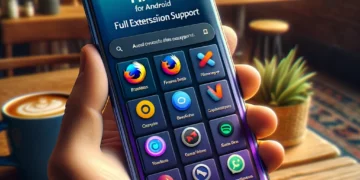These flagship devices will feature Qualcomm’s Snapdragon X75 modem for lightning-fast and efficient 5G connectivity. Discover the benefits of this groundbreaking technology and Apple’s departure from their usual modem strategy. Get all the details here!
Apple is gearing up for the release of their next-generation iPhones, and rumors are already swirling about what to expect. According to technology analyst Jeff Pu, the iPhone 16 Pro and iPhone 16 Pro Max will support ‘5G Advanced’ with Qualcomm’s Snapdragon X75 modem, providing faster and more efficient 5G connectivity. This is a departure from Apple’s usual strategy of using the same modem across all models for each generation of iPhones, and it could mean big things for the performance of these flagship devices. The Snapdragon X75 modem offers improved carrier aggregation, technology advancements, and even takes up less space and uses less power compared to previous models. With the promise of ‘5G Advanced’ and rumors of Apple developing their own 5G modem in the future, it’s an exciting time for iPhone enthusiasts. The iPhone 16 lineup is expected to be announced in September 2024, so we’ll have to wait and see what Apple has in store for us.
iPhone 16 Pro and iPhone 16 Pro Max to Support ‘5G Advanced’
The next-generation iPhone 16 Pro and iPhone 16 Pro Max are set to revolutionize the world of mobile connectivity with their support for ‘5G Advanced.’ These devices will be equipped with Qualcomm’s Snapdragon X75 modem, which promises faster and more power-efficient 5G connectivity. This is a significant development for Apple, as previous models have used the same Qualcomm modem across all variants. Let’s take a closer look at the Snapdragon X75 modem and the benefits it brings to the table.
Qualcomm’s Snapdragon X75 Modem
The Snapdragon X75 modem, announced in February 2023, is a game-changer in the world of mobile connectivity. It boasts improved carrier aggregation and other technology advancements, enabling faster 5G download and upload speeds compared to its predecessor, the Snapdragon X70. The modem’s combined mmWave and sub-6GHz 5G transceiver is also more space-saving and power-efficient, taking up 25% less circuit board space and using up to 20% less power.
Faster and More Power Efficient 5G Connectivity
With the Snapdragon X75 modem, the iPhone 16 Pro and iPhone 16 Pro Max will deliver lightning-fast 5G speeds. Users can expect significant improvements in both download and upload speeds, making tasks such as streaming high-quality content, video conferencing, and downloading large files a breeze. The modem’s advanced technology ensures a seamless and lag-free experience, pushing the boundaries of what is possible on a mobile device.
Moreover, the Snapdragon X75 modem’s power-efficiency translates to longer battery life for the iPhone 16 Pro series. Users can enjoy extended usage without worrying about draining their battery quickly. This is an important aspect for individuals who heavily rely on their smartphones throughout the day.
Change in Modem Strategy for Apple
For the first time, Apple is adopting a different modem strategy by equipping the standard iPhone 16 and iPhone 16 Plus with the Snapdragon X70 modem. In the past, Apple has used the same modem across all models within a generation, with the exception of the low-end iPhone SE. This change in strategy showcases Apple’s commitment to optimizing its devices for different user needs. The company aims to strike a balance between delivering cutting-edge technology and providing affordable options to a wider range of consumers.
Snapdragon X75 Modem Features
The Snapdragon X75 modem offers a range of impressive features that contribute to its superior performance. Let’s explore some of these key highlights.
Improved Carrier Aggregation
Carrier aggregation is a technology that enables the simultaneous use of multiple frequency bands to achieve higher data rates and improve network capacity. The Snapdragon X75 modem takes carrier aggregation to the next level with its improved capabilities. This means that users will experience faster and more reliable connections, even in areas with heavy network traffic.
Technology Advancements
Qualcomm’s Snapdragon X75 incorporates various technological advancements that enhance its overall performance. These advancements include improved signal reception, better network coverage, and optimized network selection algorithms. As a result, the modem ensures a more stable and robust 5G connection, allowing users to remain connected even in challenging network conditions.
Faster 5G Download and Upload Speeds
One of the main highlights of the Snapdragon X75 modem is its ability to deliver faster 5G download and upload speeds. Users can expect lightning-fast downloads of movies, apps, and other content, enabling them to access their favorite media in the blink of an eye. Similarly, uploading files, including high-resolution photos and videos, will be significantly quicker, enhancing productivity and convenience.
Space-saving and Power-efficient Design
The Snapdragon X75 modem not only delivers superior performance but also occupies less space within the iPhone 16 Pro and iPhone 16 Pro Max. This space-saving design allows for additional components or optimizations, ensuring a sleek and compact device without compromising on features. Additionally, the modem’s power-efficient design prolongs battery life, enabling users to enjoy their devices for extended periods without the need for frequent recharging.
What is ‘5G Advanced’
‘5G Advanced’ represents the next phase of 5G technology, encompassing a range of enhancements and advancements that take mobile connectivity to new heights. This next-generation standard builds upon the foundation established by 5G and introduces exciting features that significantly improve performance and expand the possibilities of 5G technology.
Description of ‘5G Advanced’
5G Advanced’ is characterized by its integration of artificial intelligence (AI) and machine learning (ML) capabilities into the 5G network. These technologies enhance the overall performance and efficiency of the network, allowing for smarter, faster, and more reliable connections. ‘5G Advanced’ is not just about speed; it represents a new era of intelligent networking that adapts to user needs and provides a seamless experience.
AI and Machine Learning Enhancements
By incorporating AI and ML into the 5G network, ‘5G Advanced’ introduces a range of innovative features and functionalities. These enhancements enable the network to learn from user behavior and adapt accordingly, delivering optimized connectivity and personalized experiences. Additionally, AI and ML facilitate real-time network management, ensuring efficient utilization of network resources and prioritization of critical data.
Expansion of 5G to More Devices and Use Cases
‘5G Advanced’ extends the capabilities of 5G technology beyond smartphones and traditional use cases. It paves the way for 5G to power a wide range of devices, including wearables, Internet of Things (IoT) devices, autonomous vehicles, and smart home appliances. The expanded compatibility and versatility of ‘5G Advanced’ open up new possibilities for innovation and connectivity, driving the development of a truly connected ecosystem.
Apple’s Own 5G Modem
While the iPhone 16 Pro and iPhone 16 Pro Max will feature Qualcomm’s Snapdragon X75 modem, there have been rumors of Apple working on its own 5G modem. However, the development of Apple’s proprietary modem has reportedly faced challenges, pushing its expected release date to 2025 or even later. Despite these challenges, Apple remains committed to developing its own modem, with the hope of gaining more control over its hardware and reducing reliance on external suppliers.
Rumored Development
Rumors about Apple developing its own 5G modem have been circulating since 2018. The company’s decision to develop its own modem aligns with its long-term goal of vertical integration and reducing its dependence on third-party components. By designing its own modem, Apple aims to have more control over the features, performance, and compatibility of its devices, further differentiating them from competitors.
Challenges and Timeline
Developing a 5G modem is a complex undertaking that requires significant expertise and resources. Apple’s reported challenges in developing its modem highlight the complicated nature of this endeavor. These challenges may include technical hurdles, optimizing power efficiency, ensuring compatibility with various networks, and meeting regulatory standards.
As a result of these challenges, Apple’s proprietary 5G modem is not expected to be ready until 2025 or later. This timeline underscores the extensive research, development, and testing required to create a modem that meets Apple’s stringent standards and seamlessly integrates into their devices.
Extension of Agreement with Qualcomm
In the meantime, Apple has extended its agreement with Qualcomm, ensuring a continued partnership for the supply of 5G modems. This agreement extends through 2026, providing Apple with a reliable source of modems while it continues its work on its proprietary solution. The partnership with Qualcomm allows Apple to leverage their cutting-edge technology and expertise in the field of mobile connectivity.
Expected Announcement and Release
The announcement of the highly anticipated iPhone 16 lineup is expected to take place in September 2024. Apple typically unveils its new iPhones during this timeframe, generating excitement among tech enthusiasts and consumers alike. The launch plans for the iPhone 16 Pro and iPhone 16 Pro Max will likely follow shortly after the announcement, with availability in major markets worldwide.
Users can look forward to the unveiling of the iPhone 16 Pro and iPhone 16 Pro Max, equipped with Qualcomm’s Snapdragon X75 modem and supporting ‘5G Advanced.’ These devices will represent Apple’s commitment to delivering the latest advancements in mobile connectivity, providing users with faster and more efficient 5G experiences. As the development of Apple’s own 5G modem continues, the iPhone 16 Pro series serves as a testament to Apple’s dedication to pushing the boundaries of technology and delivering cutting-edge devices to its global customer base.










![Apple Watch SE (2nd Gen) [GPS 40mm] Smartwatch with Starlight Aluminum Case with Starlight Sport Band S/M. Fitness & Sleep Tracker, Crash Detection, Heart Rate Monitor](https://www.tech-bit.com/wp-content/uploads/2024/06/applewatchse2ndgengps40mmsmartwatchwithstarlightaluminumcase-360x180.jpg)














![Apple Watch Series 9 [GPS 45mm] Smartwatch with Midnight Aluminum Case with Midnight Sport Band S/M. Fitness Tracker, ECG Apps, Always-On Retina Display, Water Resistant](https://www.tech-bit.com/wp-content/uploads/2024/06/applewatchseries9gps45mmsmartwatchwithmidnightaluminumcasewith-360x180.jpg)




![Apple Watch Ultra 2 [GPS + Cellular 49mm] Smartwatch, Sport Watch with Rugged Black Titanium Case with Black Ocean Band. Fitness Tracker, Precision GPS, Action Button, Extra-Long Battery Life](https://www.tech-bit.com/wp-content/uploads/2024/10/applewatchultra2gpscellular49mmsmartwatchsportwatchwithrugged-360x180.jpg)
























![Apple iPhone 15 (128 GB) - Pink | [Locked] | Boost Infinite plan required starting at $60/mo. | Unlimited Wireless | No trade-in needed to start | Get the latest iPhone every year](https://www.tech-bit.com/wp-content/uploads/2023/10/apple-iphone-15-128-gb-pink-locked-boost-infinite-plan-required-75x75.jpg)








